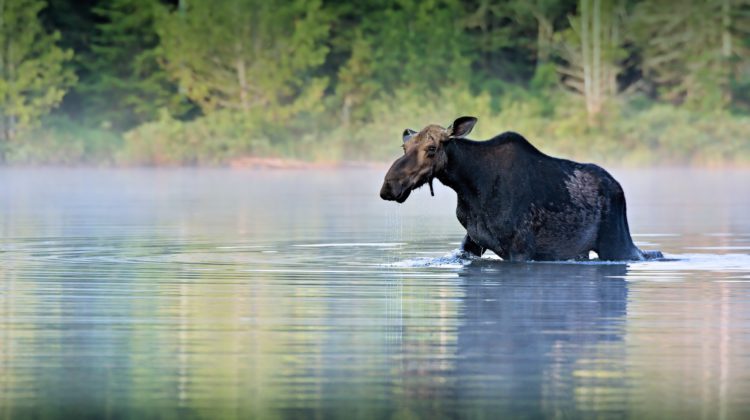(Files by Dione Wearmouth-MyPGNow)
The Moose population around Prince George could be starting to trend upwards, according to Tyler Hooper of BC’s Ministry of Forests, Lands and Natural Resource.
An aerial survey conducted in December 2020 shows preliminary results that suggest moose density increased by 11-13% per year since 2016/17 West of PG and in Fort St.James.
While the report isn’t finalized, the initial results also show that East of Prince George, the numbers are remaining relatively stable.
This comes after UNBC students conducted an analysis on moose cow survival in the spring of 2019, which revealed the moose population saw a 50-70% decline across BC over the past decade.
The report found that the top 3 causes of death within the 456 cow moose monitored throughout the province from 2012-2018 were wolves, predation and apparent starvation, respectively.
“Such factors such as loss of mature forest cover for thermal/security, increased roads that provide access for predators and hunters, and reduced forage quality are leading hypotheses to Moose declines,” adds Hooper,” these factors affecting moose survival are currently being investigated, including forage, health parameters, wolf predation, and landscape characteristics at calving sites.”
Last year, a group of ecology students at UNBC spent the summer studying the reason for this decline and found the Pine Beetle infestation in the early 2000s played a large part.
As a result of the Pine Beetle infestation, plenty of the landscape South West of PG is fragmented by roads and dominated by plantations that comprise monocultures of young Pine and Spruce trees, according to Hooper.
However, a moose habitat enhancement project is currently being piloted just West of PG.
“The objective of this project is to enhance forage habitat and thermal/security cover by testing different manual and mechanical thinning treatments in 10 to 20-year-old, free-to-grow cut blocks that have minimal understory and poor thermal cover,” explained Hooper.
Additionally, the provincial government launched a Winter Tick surveillance program in 2015 to help reduce the rates of moose dying off due to tick infestations.
The ticks live off a variety of Ungulates in Northern BC, causing their host to lose large patches of hair, anyone that sees a moose with a large bald spot is being asked to complete this form that is available until April 30th.
Moose hunters in Northern BC can also assist in monitoring BC’s moose population by using the BC Moose Tracker App.




